Strategic approach to workforce
One of the main tasks of the HR management is to develop consistent strategic approach with the following steps:
- to define strategic roles of the workforce;
- to ensure consistent HR policy;
- to promote the organizational culture.
The strategic approach to managing human resources is way to make role of each employee clear, and their tasks understandable. The division of the strategic roles in ‘foot soldiers’, ‘guardians’, and ‘stars’ guarantees that each employee knows what his or her duties are. It allows the management stay consistent in their decision and directions. This two factors lead to the formation and promotion of the organizational culture, where every employee is aware of the responsibilities and his or her role.
The process of HR selection consists of the following steps (from below):
- Hiring decision;
- Medical exam/drug test;
- Pre-employment test;
- Reference and background check;
- Interviews;
- Completion of application;
- Submission of resume.
The process of HR selection consists of a number of steps that allow to explore to the maximum the professional abilities and talents of the applicant. However, the important steps also are the background checks and the verification of the information provided by the applicant. The HR selection starts with the filing the job applications, and the competition among those applications. The most suitable candidates are invited for the interviews, where they prove their professional abilities.
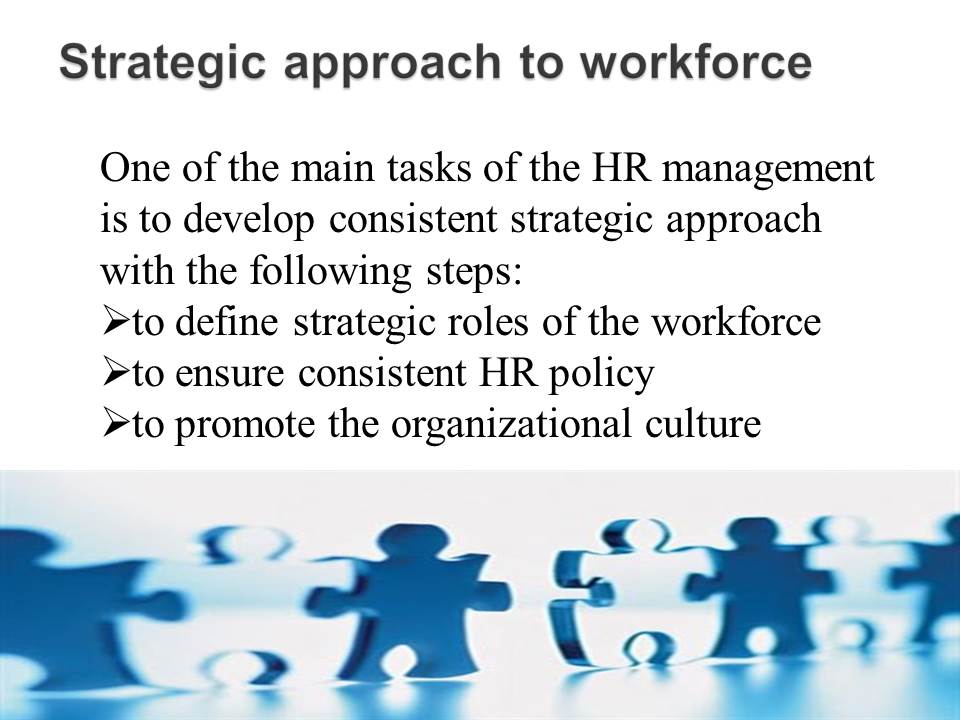
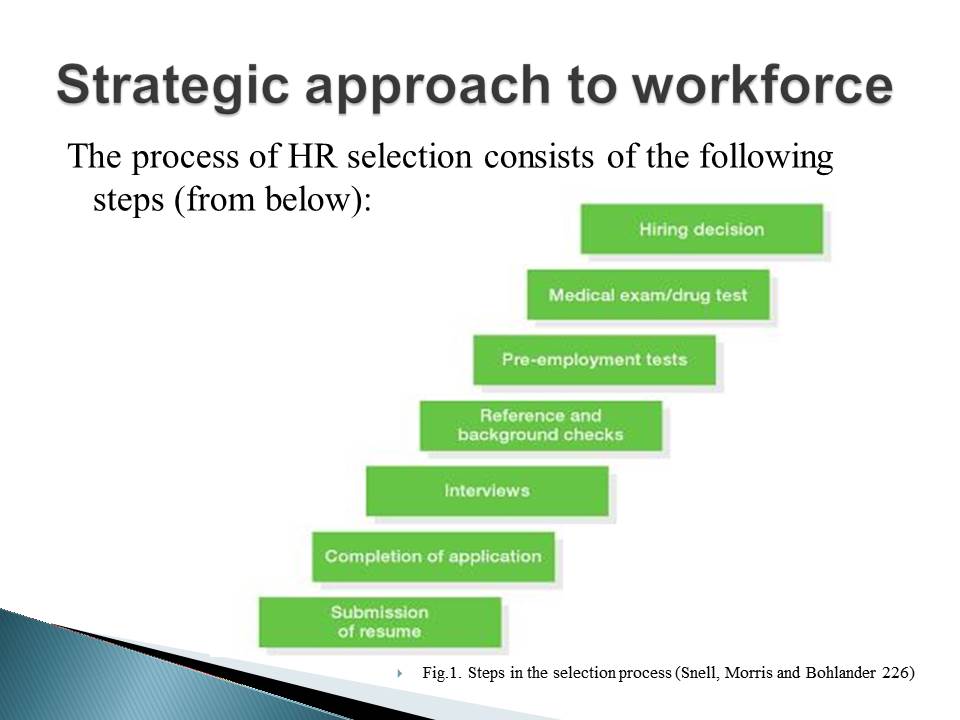
Recruitment and selection
The process of recruitment and selection of the human capital is based on:
- Reliability, the degree to which selection procedures yield comparable data;
- Validity, the degree to which test and selection methods measure an applicant’s abilities (Bohlander and Snell 226).
There are certain principles on which the recruitment and selection process is based. First of all, the human resources management are to provide the candidates with the reliable information about the vacancy and find out whether they can meet those conditions. Another application of the principle of the reliability is to ensure that the selection methods are able to guarantee the data about the applicants that can be properly compared.
The principle of validity estimates the degree of the potential of the interviews and other testing methods to measure the applicants’ competence.
The Recruitment Process:
- Creating advertisement for the vacancy;
- Providing all the vital information about the vacancy;
- Pointing out necessary requirements for the job;
- Contacting potential candidates; answering their questions about the vacancy and organizational structure, if any.
Although, the significant part of the recruitment and selection process is in the hands of the HR managers, the decision on whether to hire or not to hire a certain candidate is taken by the multiple parties. In the most of areas of work the significant factor is the evaluation of the candidate by his or her fellow professional. However, in any case, the consultation among representatives of different branches of the company allows to estimate the candidate in a more complex way.
The Selection Process is a number of steps to choose the new employee. It may consists of:
- Application form;
- Resume/Curriculum Vitae checking;
- Informal interview;
- Formal interview;
- Reference/recommendations checking;
- Professional testing and examinations.
The purpose of the application form is to reveal the basic information about the candidate, including the data concerning education, history of personal qualifications, and appropriate credentials.
At this stage, the applicants who are not qualified enough to perform the job or do not correspond to the requirements in the vacancy advertisement, are rejected.
CV or resume usually reveals the more detailed information about the candidate, emphasizes his or her strong traits and achievements.
The next stage of the selection process is the interviewing.
Interviewing is an essential part of the selection process. It helps to evaluate abilities and behavior of the candidate.
Interviews:
- Formal (with a list of questions and the strict structure);
- Informal (with more free format, where one question lead to another).
Interviews differ by the structure of the conversation; they can be formal and informal. Furthermore, they can be conducted by the HR manager and the Head of the department separately or by the entire panel of the interviewers.
The purpose of the interviewing is to share the information between the applicant and the members of the organization. Both the interviewing panel and the candidate get a good opportunity to ask each other questions and to obtain valuable information.
Professional and physical examination instend to:
- Identify level of professional confidence of the applicant;
- Find out whether the applicant’s capabilities correspond to the requirements of the job.
Due to the professional tests the employer has an opportunity to obtain further information about the applicant that is relevant to the job. Additional information that is commonly gathered includes data concerning the applicants’ intelligence, attitude to work, and job motivation, personality profile and spare-time interests.
The medical and physical tests are also required for certain types of job. Physical exams are usually necessary for the applicants for the positions that can be physically challenging, require certain amount of force, have health and body specific requirements.
The drug tests are also taken at this stage of the selection process.
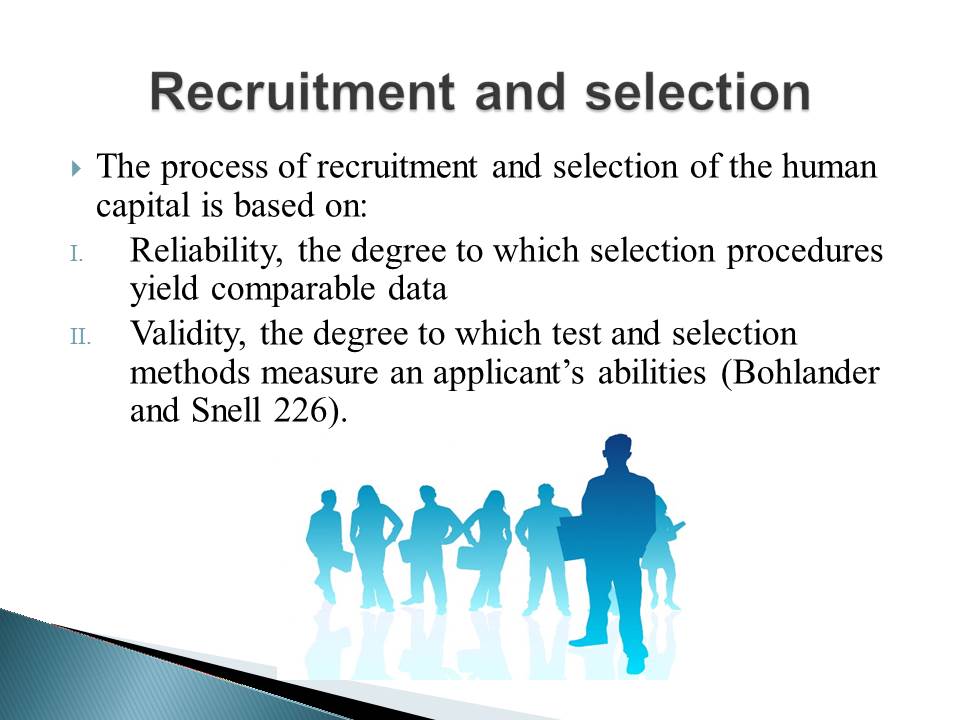
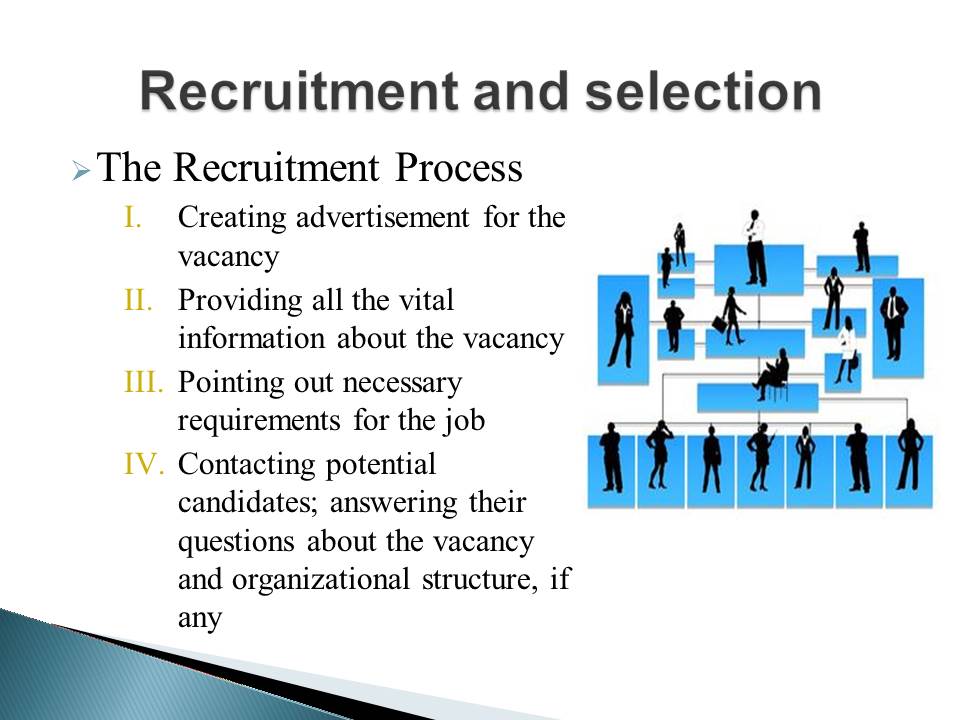
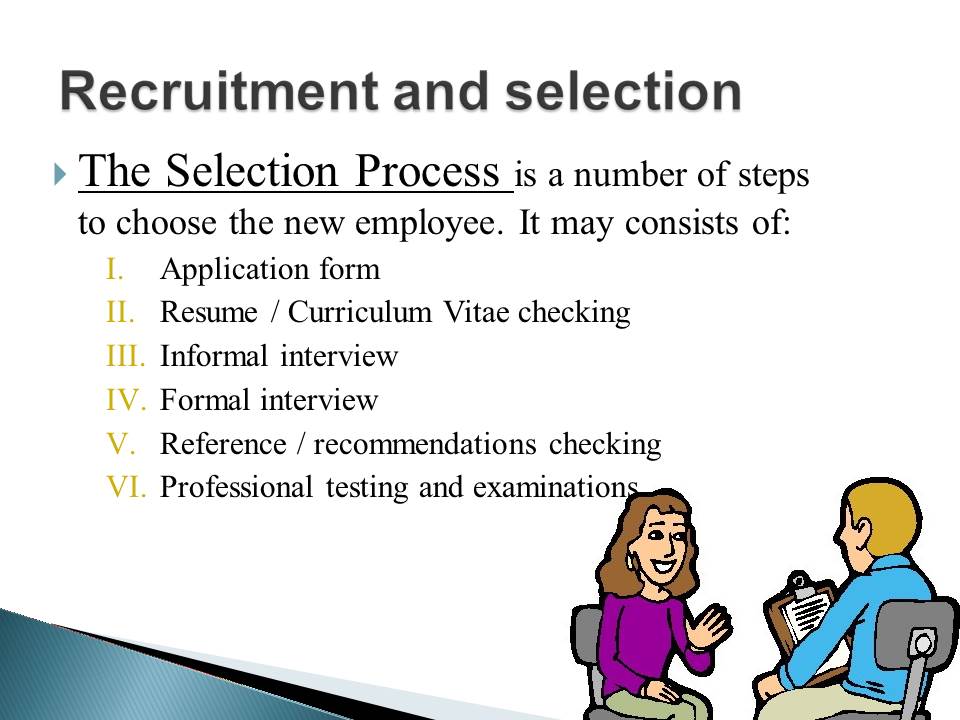
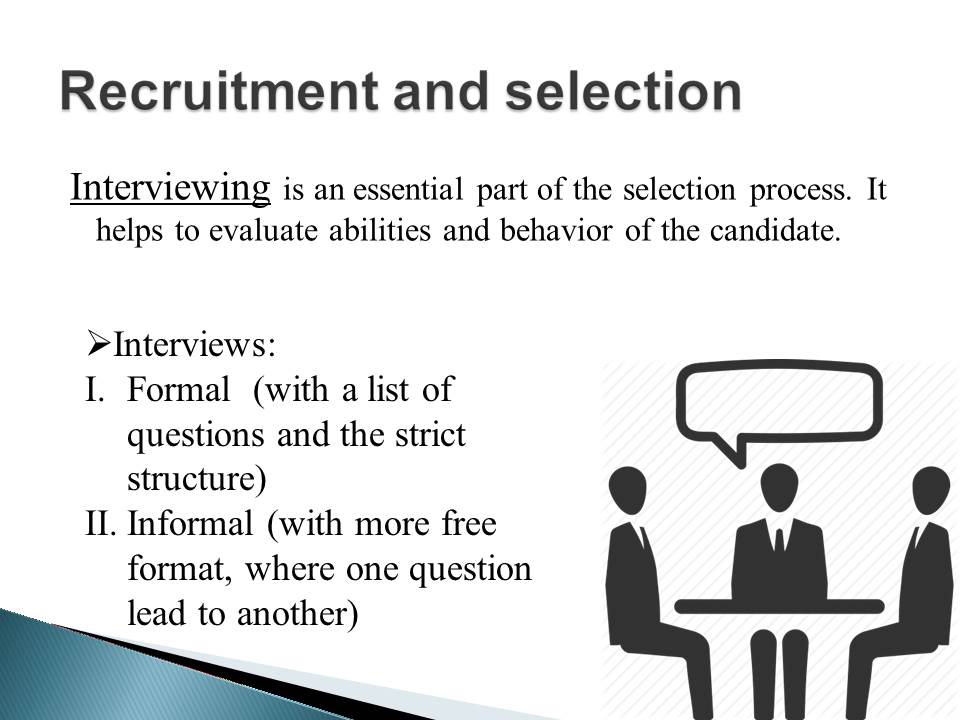
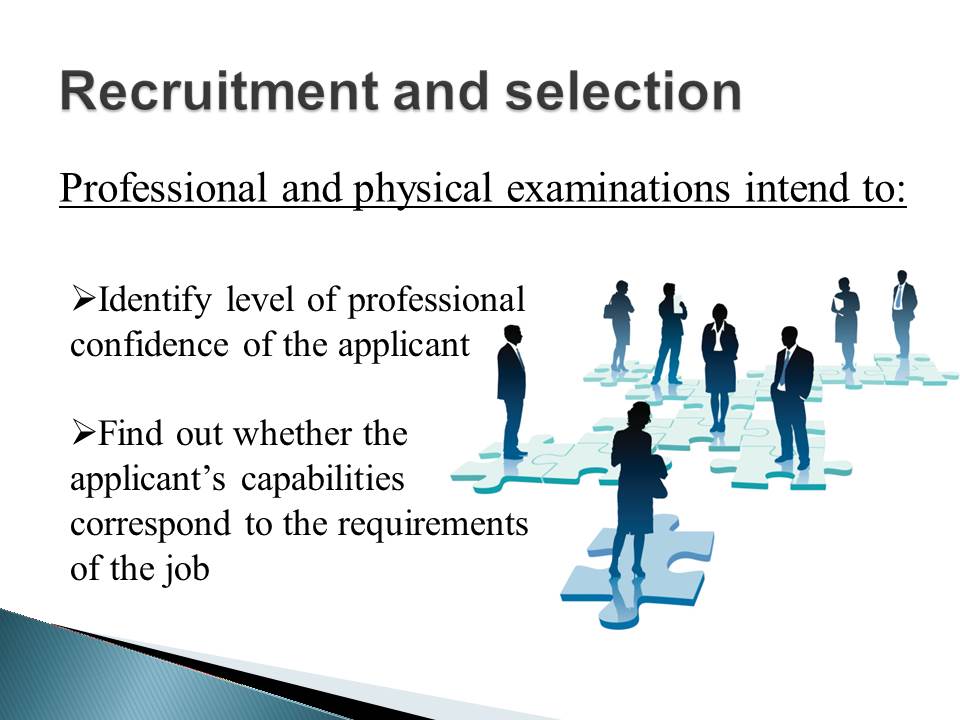
Developing the competent human capital
There is a number of methods for the HR manager to ensure the employees development:
- Socializing with fellow employees and management;
- Professional orientation for new employees and managerial support for them;
- Training to obtain new job skills;
- On-the-job trainings and coachings;
- Time-off trainings, leadership schools.
There is a number of activities that are designed for the new employee to acquire the set of the skills relevant to the job. It includes both social and self-awareness skills, and professional abilities. Socially the new employee is to grasp the basics of the corporate culture of the organization he or she works for. Different professional trainings and coachings aim to provide the human capital with the skills of management, leadership, professional development and growth.
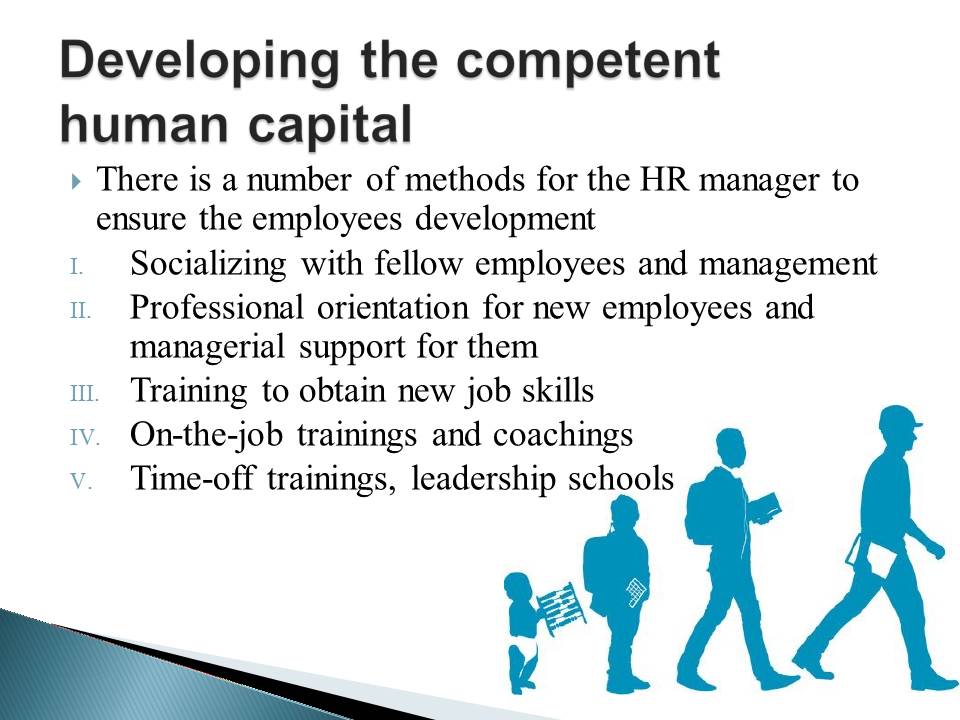
Maintaining quality work and career development among employees
The responsibilities of the HR manager include:
- To ensure the high-quality work among employees;
- To administer their professional development;
- To develop opportunities for work-rotation;
- To look after the work-life balance of the workforce, to administer provided compensations and benefits;
- To participate in career planning;
- To evaluate flight risks;
- To deal with managerial difficulties.
The important function of the human resources management is to give the feedback concerning the employees’ work. To make the workforce more aspiring, it is vital to explain them the standards of work and check on whether they correspond to those standards. It will allow the human capital to evaluate their own work and their goals, and compare it to the objective of the company.
To recognize the level of the employees’ performances the HR managers use the check-lists and statistical information.
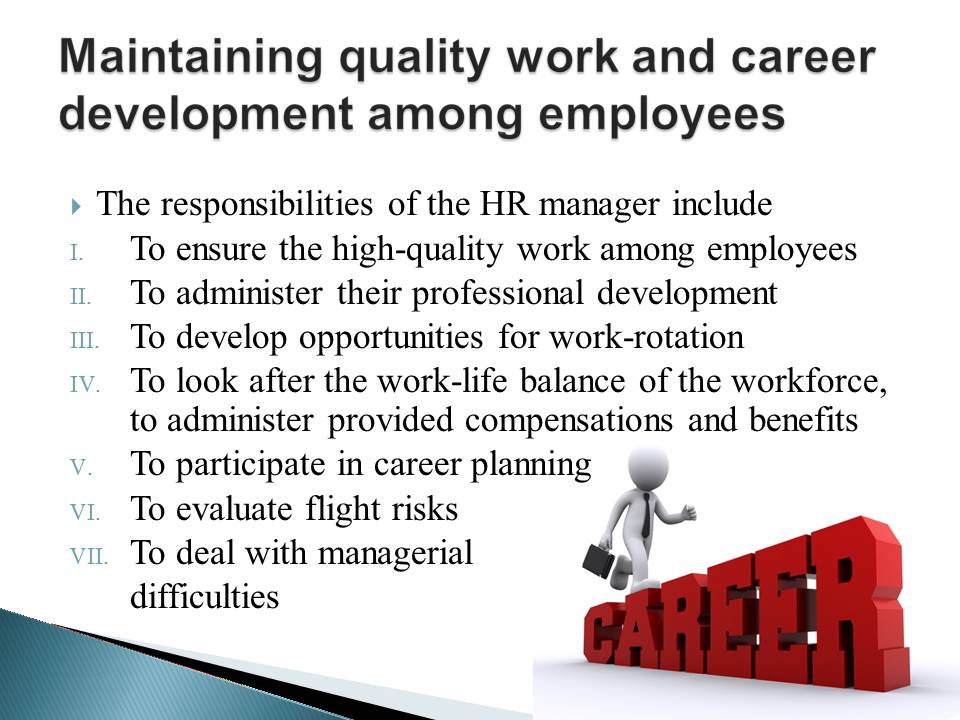
Conclusion: Managing the Human Capital
In modern world, to manage and to ensure development of the human capital, the HR manager is not only to find the right candidates for the job but also to help them reveal their maximum abilities and create the environment for them to grow professionally.
In order to manage the development of the human capital, the HR manager is not only to find the right candidates for the job but also to help them reveal their maximum abilities. With the developing technologies, the human resources managers can be less concerned about keeping the paper records organized, and find more time and resources to work on strategic aspects of the work of the company.
The purpose of the human capital development is not only to keep the records of the workforce employed at the company, but also to take care of the career planning, professional development of the employees, their work-life balance, compensations, benefits, and overall professional growth.
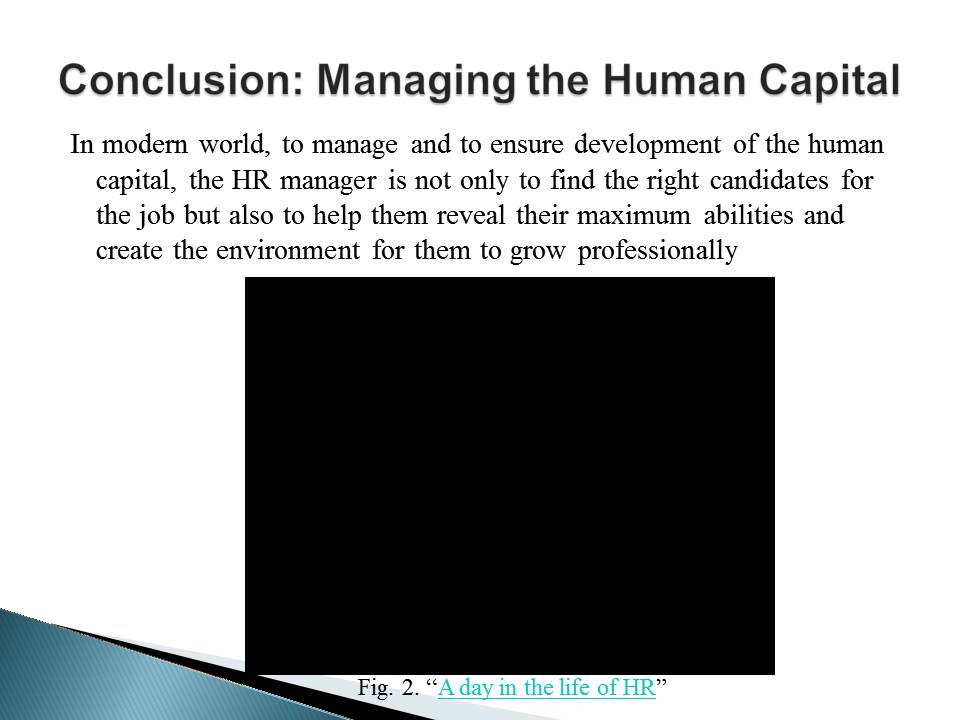
Works Cited
A Day In The Life Of HR. 2011. Video. Human Capital Management by PeopleStream. Web.
Bohlander, George W, and Scott Snell. Managing Human Resources. Mason, OH: Thomson/South-Western, 2004. Print.